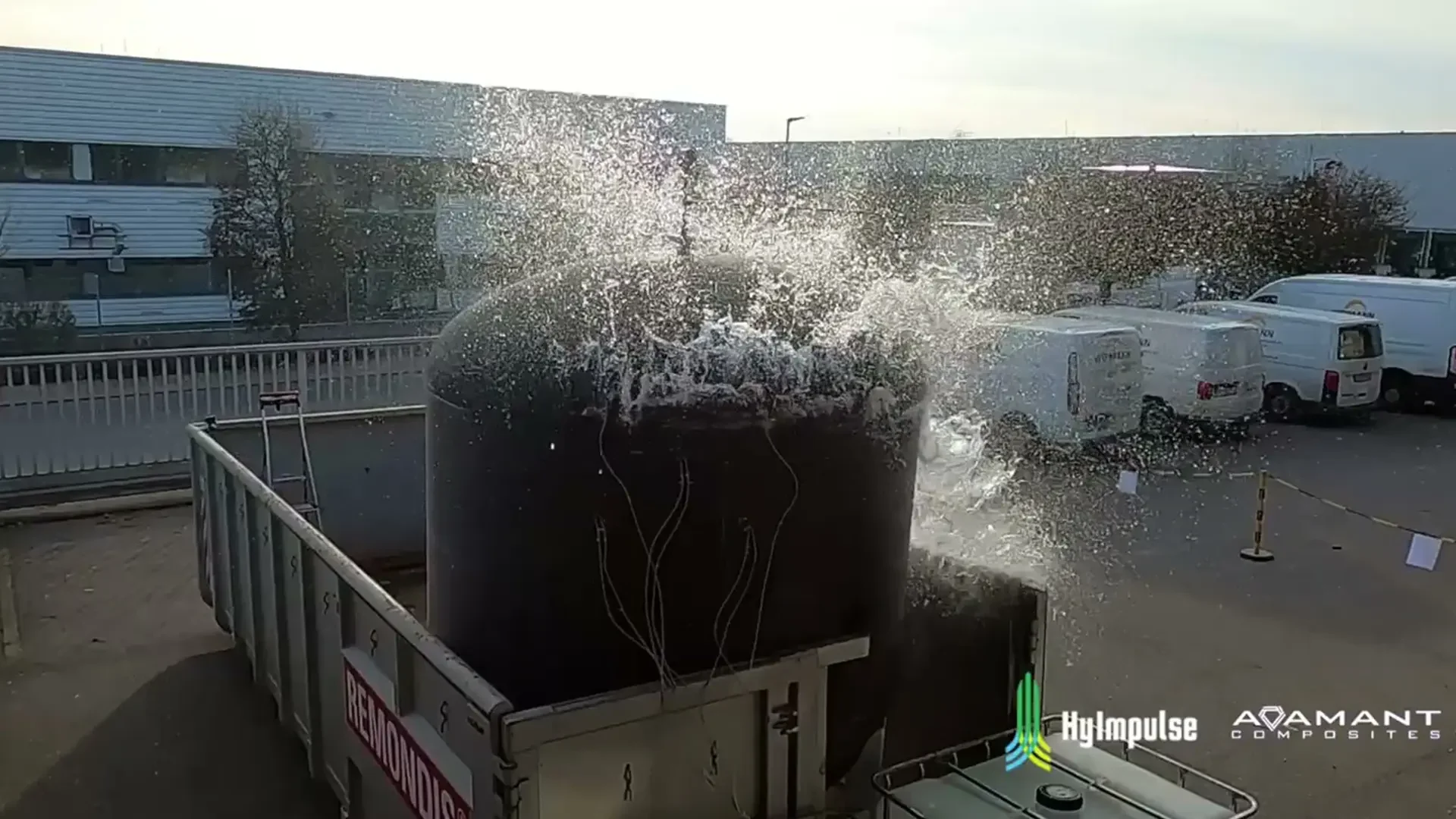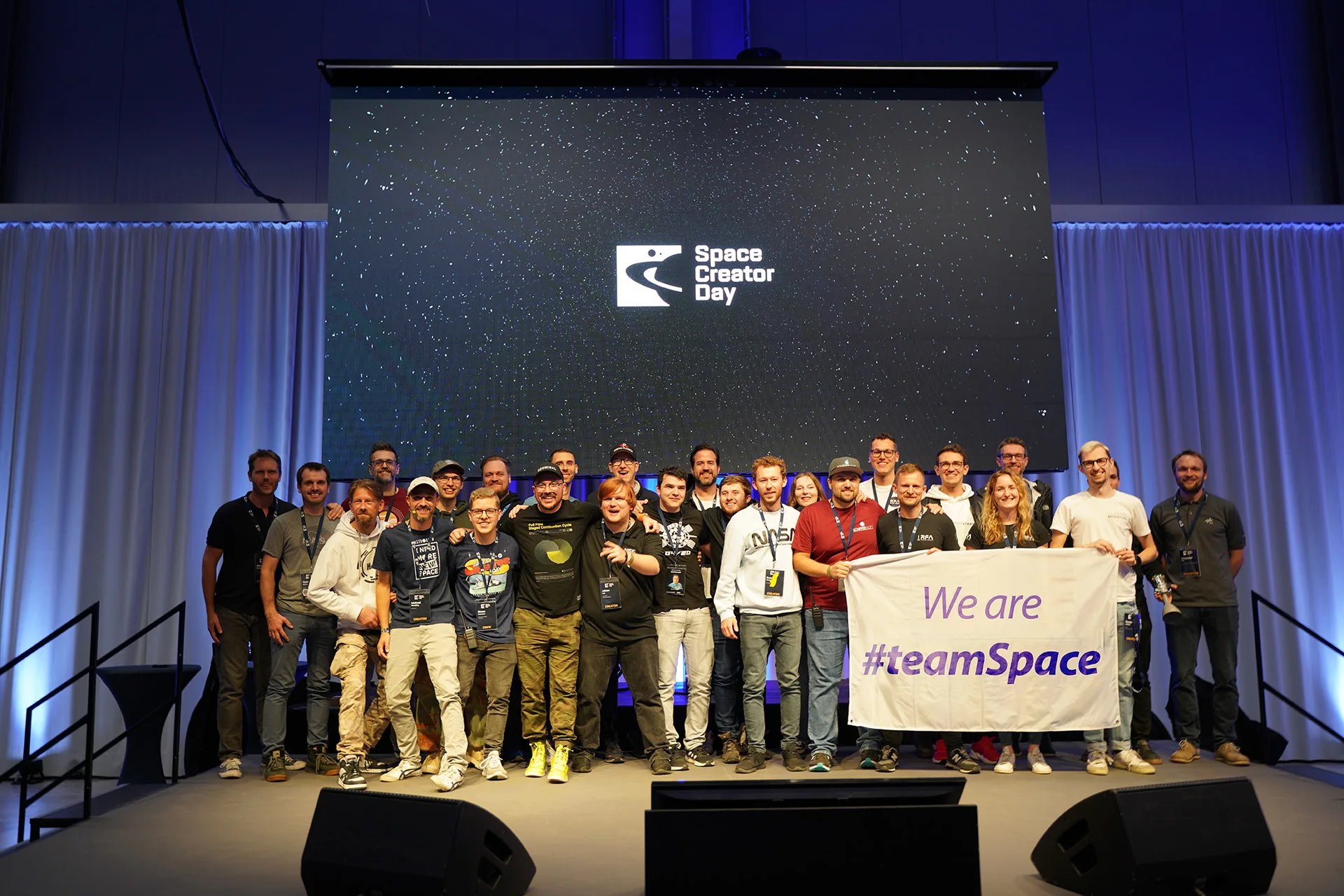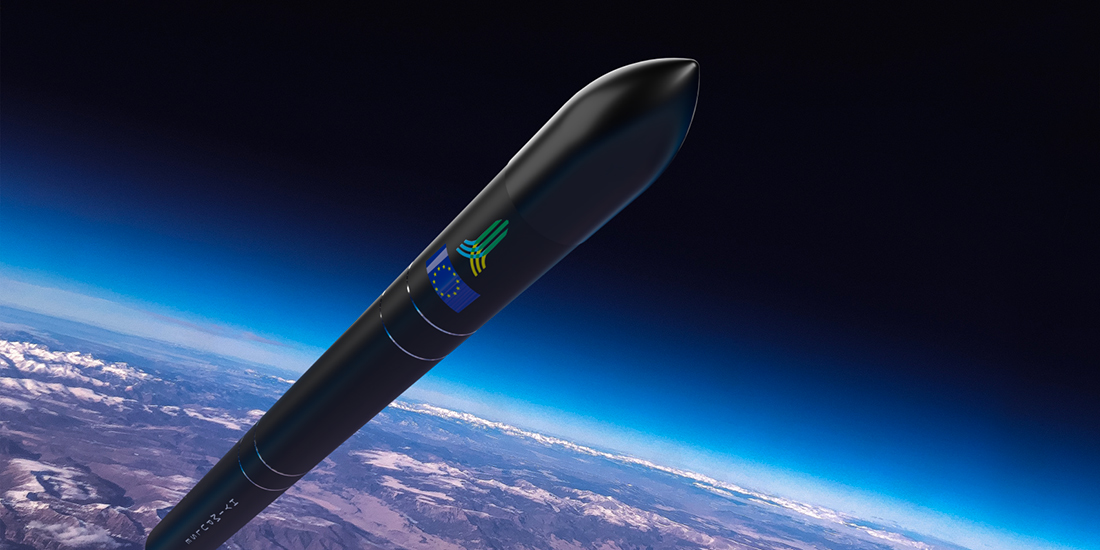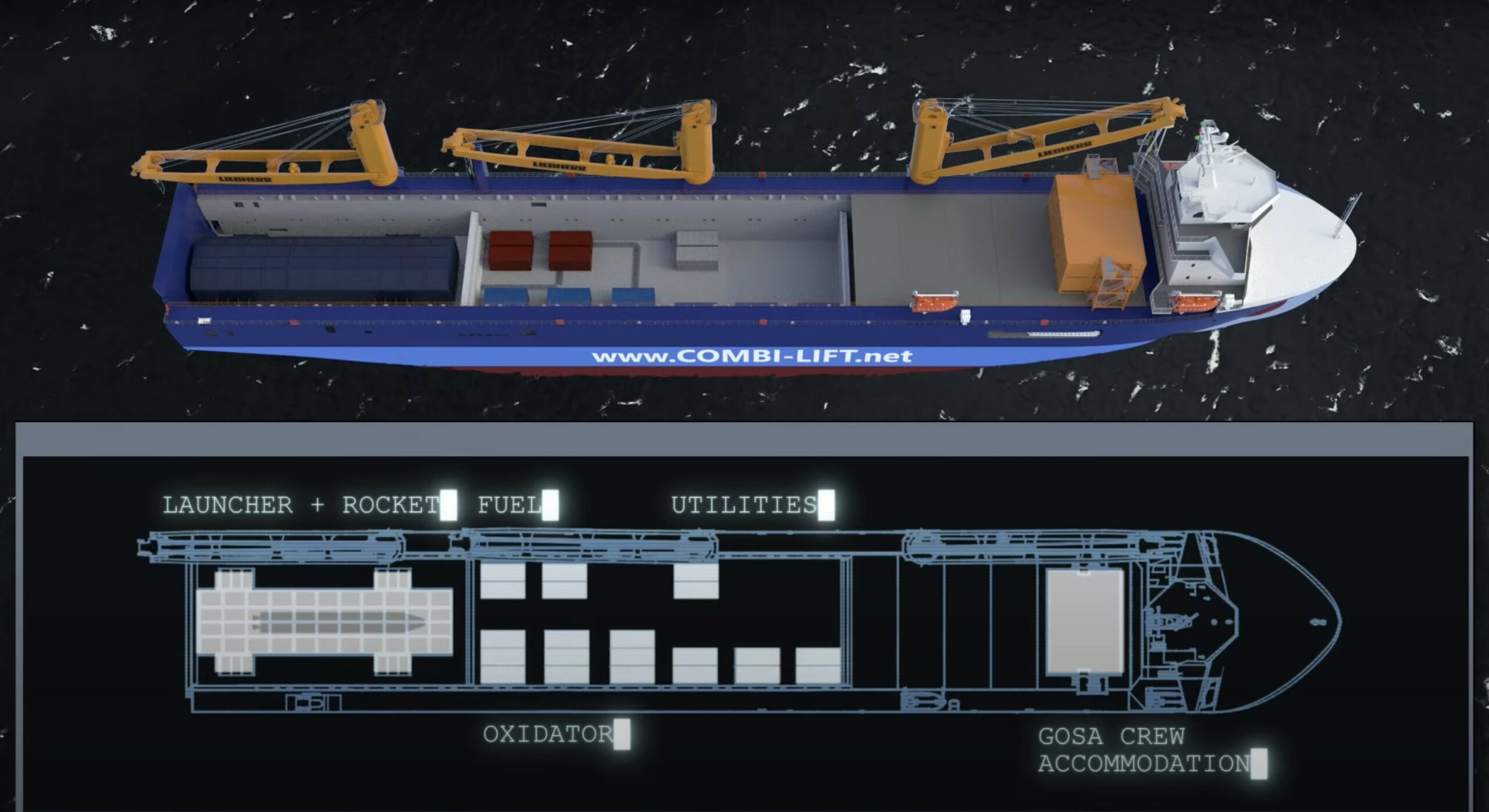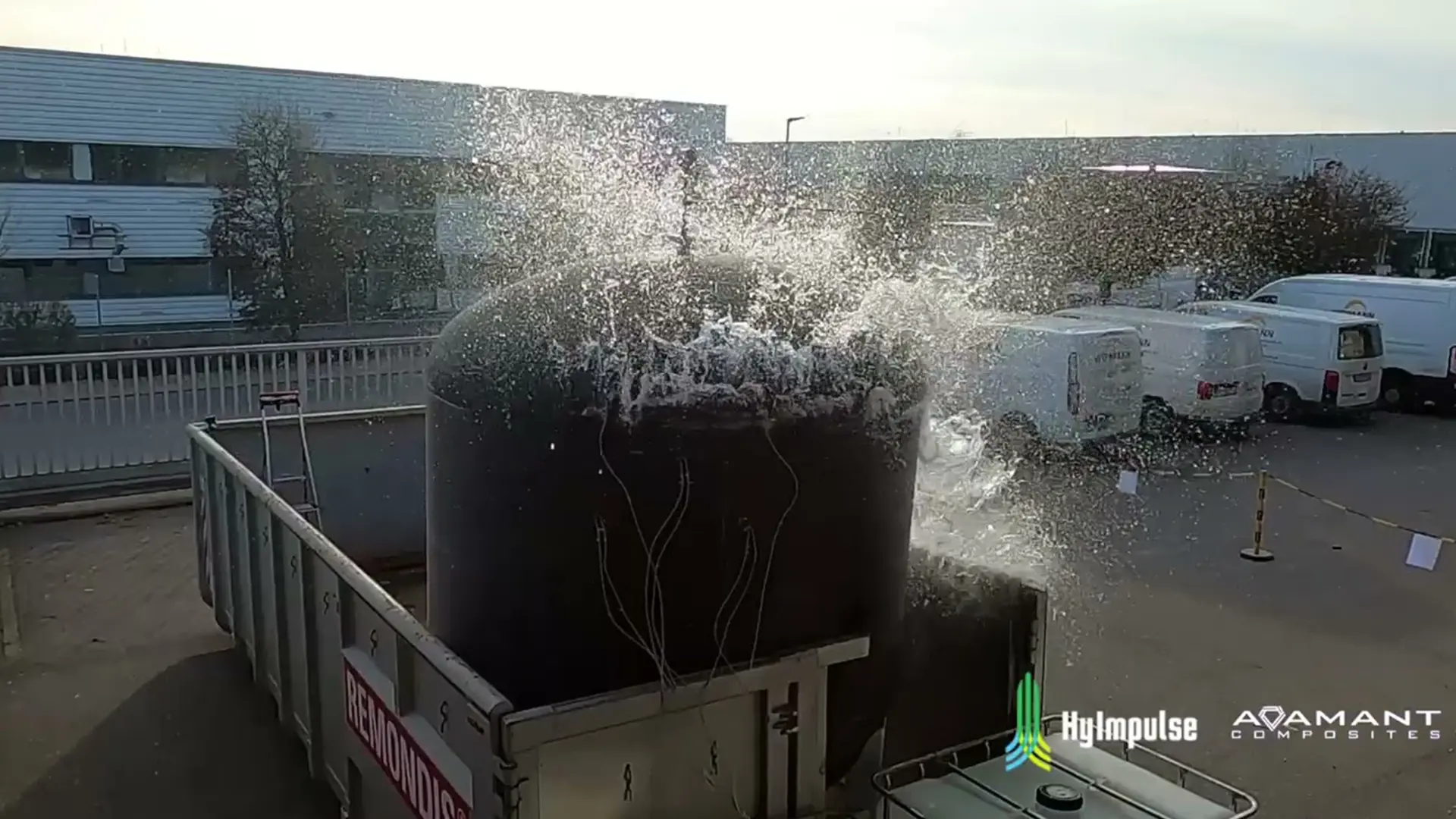
HyImpulse successfully tests CFRP oxygen tank
Published on Tue, 21.02.2023 – 07:23 CET in Upstream, covering HyImpulseThe Microlauncer SL-1 from the Baden-Württemberg (Germany) company HyImpulse is special in many ways. For example, the 27-metre rocket is powered by paraffin. In addition, the liquid oxygen tank is made of carbon fibre reinforced polymer (CFRP). With the successful completion of a hydrostatic burst test, HyImpulse has now reached another important milestone in the development of the small launch vehicle.
HyImpulse is developing the tank in collaboration with Adamant Composites, a Greek manufacturer of composite materials. Both companies are pursuing several objectives. One is to significantly reduce the production time. This is important because the planned space activities involve a large number of rocket launches in a short period of time. Long waiting times for rockets or their components are an obstacle. But the cost of building or launching a rocket should also be reduced. This can be achieved, for example, by reducing the weight of the launcher. One way of doing this is to use CFRP. This is an approach that SpaceX also pursued with the Starship, but quickly abandoned in favour of stainless steel. HyImpulse, on the other hand, has continued to work on this process and has now achieved success.
HyImpulse focuses on hybrid propulsion systems and lightweight materials
Although the Microlauncher SL1 is still under development, some of its components are already undergoing important tests. These include the liquid oxygen (LOX) tank, which is used as an oxidiser for the solid propellant (paraffin). This tank will be exposed to extreme conditions during flight, so its load-bearing capacity is particularly important. In this respect, the pressure test is also a critical point in the development. To be on the safe side, pressure vessels used in space travel - and tanks are nothing more than that - are subjected to pressures that far exceed what can actually be expected in practice. The aim is to identify any possible weak points or sources of error in order to ensure safety and reliability. The HyImpulse tank has now passed such a test.
Milestone in the development of SL1
""We are thrilled with the results of this test"
Mario Kobald, CEO of HyImpulse, is visibly pleased: "We are thrilled with the results of this test," he says. He can now add another achievement to his CV, which reads like a success story. After all, he has been working at the DLR Institute of Space Propulsion since 2010, where he heads the hybrid propulsion research group. From 2012 to 2016, he was project manager of the HyEnD hybrid sounding rocket project at the University of Stuttgart. So developing new ideas and innovations for space is nothing new for him.
The use of linerless CFRP in our LOX tanks significantly improves our performance and reduces weight and cost. This successful test brings us one step closer to bringing this innovative technology to SL1 and revolutionizing the space launch industry.
Mario Kobald, CEO HyImpulse
According to HyImpulse, the use of linerless CFRP tanks in the European aerospace industry is still relatively new and has not been extensively tested. Antonios Vavouliotis, CEO of Adamant Composites, agrees that it has the potential to change the industry forever: "The unique full composites design provides 30 % mass savings, while the robotic inspired production process reduces the cycle time by 50% and cost by 25 %." He believes that revolutionising access to space will come through revolutionising the design and manufacture of composite structures. It will be some time before that happens. The first flight of the SL1 micro-launcher is currently scheduled for 2024. There was also an update on the BDI's NewSpace initiative at the NewSpace breakfast.
